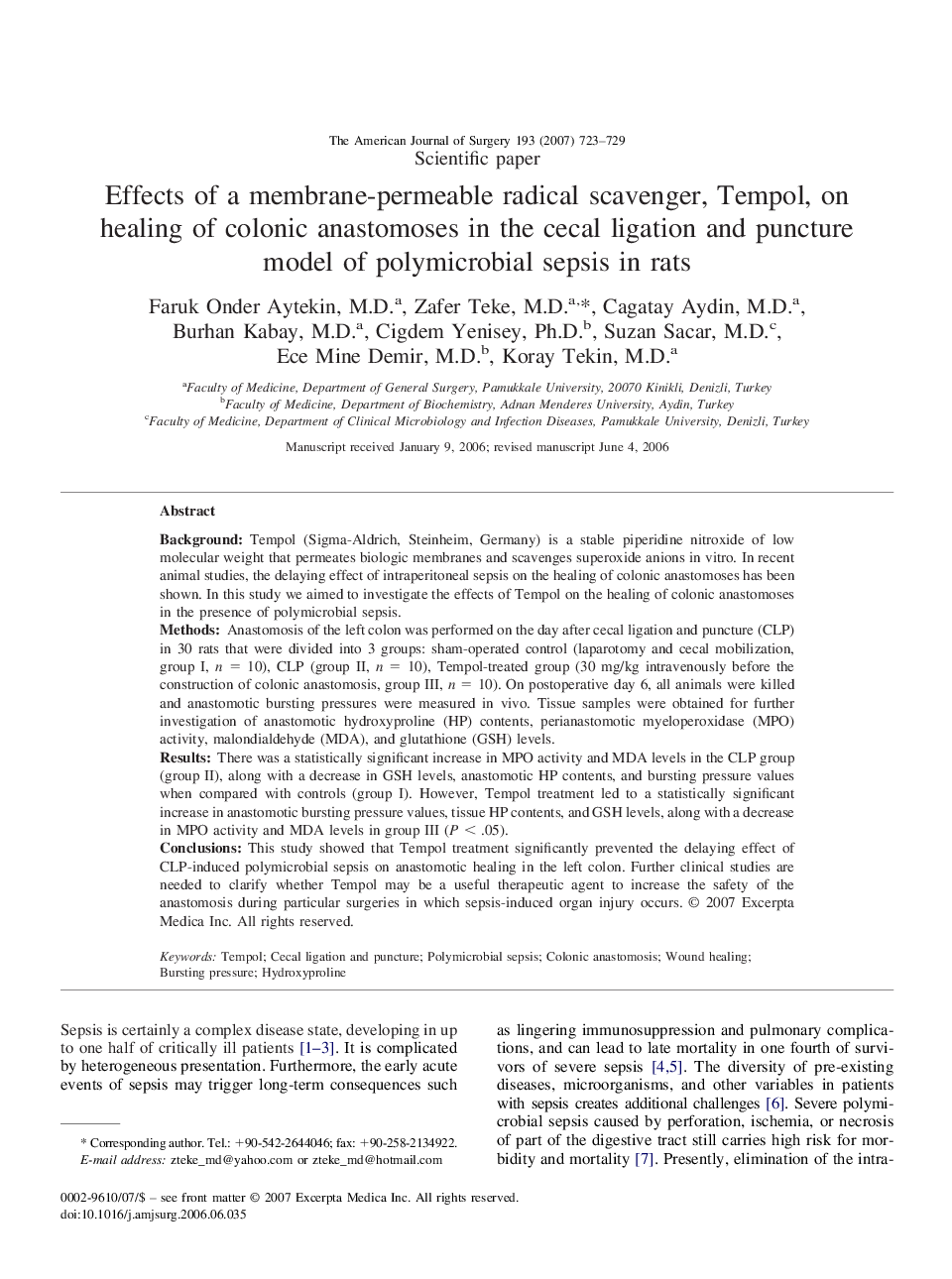| Article ID | Journal | Published Year | Pages | File Type |
|---|---|---|---|---|
| 4282275 | The American Journal of Surgery | 2007 | 7 Pages |
BackgroundTempol (Sigma-Aldrich, Steinheim, Germany) is a stable piperidine nitroxide of low molecular weight that permeates biologic membranes and scavenges superoxide anions in vitro. In recent animal studies, the delaying effect of intraperitoneal sepsis on the healing of colonic anastomoses has been shown. In this study we aimed to investigate the effects of Tempol on the healing of colonic anastomoses in the presence of polymicrobial sepsis.MethodsAnastomosis of the left colon was performed on the day after cecal ligation and puncture (CLP) in 30 rats that were divided into 3 groups: sham-operated control (laparotomy and cecal mobilization, group I, n = 10), CLP (group II, n = 10), Tempol-treated group (30 mg/kg intravenously before the construction of colonic anastomosis, group III, n = 10). On postoperative day 6, all animals were killed and anastomotic bursting pressures were measured in vivo. Tissue samples were obtained for further investigation of anastomotic hydroxyproline (HP) contents, perianastomotic myeloperoxidase (MPO) activity, malondialdehyde (MDA), and glutathione (GSH) levels.ResultsThere was a statistically significant increase in MPO activity and MDA levels in the CLP group (group II), along with a decrease in GSH levels, anastomotic HP contents, and bursting pressure values when compared with controls (group I). However, Tempol treatment led to a statistically significant increase in anastomotic bursting pressure values, tissue HP contents, and GSH levels, along with a decrease in MPO activity and MDA levels in group III (P < .05).ConclusionsThis study showed that Tempol treatment significantly prevented the delaying effect of CLP-induced polymicrobial sepsis on anastomotic healing in the left colon. Further clinical studies are needed to clarify whether Tempol may be a useful therapeutic agent to increase the safety of the anastomosis during particular surgeries in which sepsis-induced organ injury occurs.
